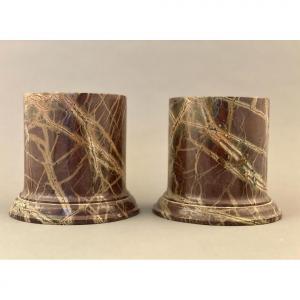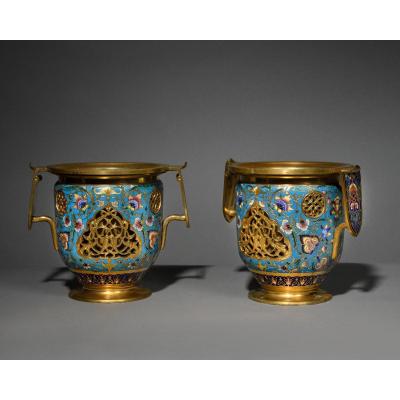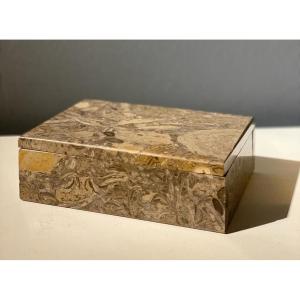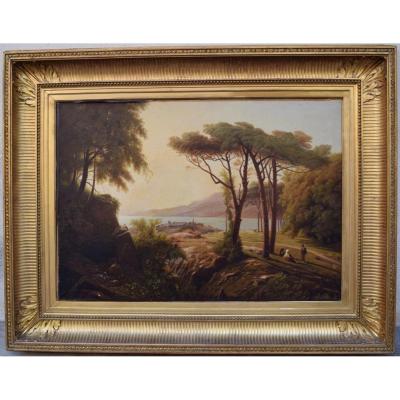Landscape with a tomb.
Watercolor on paper.
Early 19th century.
This watercolor is in the vein of the antique revival movements of the 18th century that depict an idealistic antiquity with ruins as the main subject of their painting. A monumental tomb stands in the midst of a lush green landscape, an obelisk can be seen in the distance, while the human presence is suggested by a few discreet figures that enliven the painting.
This representation seems to be the result of a combination of several inspirations. The architecture of the mausoleum is inspired by the Gallo-Roman mausoleums found in the French countryside, in particular that of Lanuéjol, near Lyon. As for the frieze decorating the latter, it recalls the bas-reliefs of Roman processions such as the fragments of the Ara Pacis, whose engraved representations circulated in Europe as early as the 17th century. With its elongated female figure and frieze of bas-reliefs the sarcophagus is modeled on the various sarcophagi discovered in Italy, of which representations and fragments were sold to wealthy aristocrats who brought them back as souvenirs from their Grand Tour.
The togas that drape the characters as well as the state of conservation of the tomb impregnate the representation with nostalgia, indicating that it is temporally situated in an antiquity in harmony with a very present nature. The notion of momento mori, traditionally present in landscapes of ruins, is also suggested by the fragment of architectural element on which the woman in the foreground leans, handing a fruit to a child, symbol of youth, while the ruin brings back the futility of life.




























 Le Magazine de PROANTIC
Le Magazine de PROANTIC TRÉSORS Magazine
TRÉSORS Magazine Rivista Artiquariato
Rivista Artiquariato